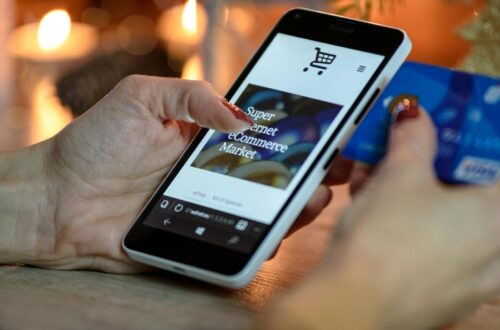How to Drive Traffic to Your E-commerce Store
Driving traffic to your e-commerce store is essential for growing your business and increasing sales. No matter how great your products are, if you’re not getting enough visitors to your site, you’re missing out on potential customers. In this guide, we’ll explore practical, effective strategies to drive traffic to your e-commerce store and turn visitors into buyers.
1. Optimize for Search Engines (SEO)
Search Engine Optimization (SEO) is key to getting organic traffic from search engines like Google. Start by using relevant keywords that potential customers might type into search engines to find your products. Tools like SEMrush or Ahrefs can help you identify high-traffic keywords and optimize your product descriptions, meta titles, and image alt texts accordingly.
Focus on building high-quality backlinks to improve your domain authority, and always ensure your website is optimized for mobile, as search engines prioritize mobile-friendly sites.
2. Create High-Quality Content
Content marketing is a powerful tool for driving traffic and building brand authority. Regularly post blogs, guides, and how-to articles that offer value to your audience. For example, if you run a fashion e-commerce store, write about the latest trends or how to style specific outfits. Incorporating keywords naturally into your content helps your site rank higher in search engines.
Use Canva to create engaging visuals for your content and Grammarly to ensure your writing is clear and polished. Content not only helps with SEO but can also be shared on social media, driving even more traffic.
3. Leverage Social Media Marketing
Social media platforms like Instagram, Facebook, Pinterest, and TikTok are powerful tools for driving traffic to your e-commerce store. Regularly post engaging content, share product updates, and interact with your audience. Instagram stories, reels, and live streams offer interactive ways to showcase your products.
Investing in paid social media ads can also be beneficial. Platforms like Facebook Ads allow you to target specific demographics, interests, and behaviors, which can drive highly targeted traffic to your store. You can also work with influencers through platforms like FameBit to expand your reach.
4. Use Email Marketing
Email marketing is one of the most effective ways to drive traffic and retain customers. Build your email list by offering incentives such as discounts or free guides in exchange for email sign-ups. Once you have a list, send regular newsletters with promotions, new product launches, and personalized recommendations.
Use tools like Mailchimp or Constant Contact to automate your email campaigns, ensuring you stay connected with your audience. Segment your email list to send more targeted messages that resonate with specific customer interests.
5. Collaborate with Influencers and Affiliates
Influencer marketing can significantly boost your traffic. Partner with influencers who align with your brand and have an engaged following. They can promote your products through posts, stories, or unboxing videos, driving traffic from their audience directly to your e-commerce store. Tools like Influencity help you find influencers that match your niche.
Similarly, setting up an affiliate program can motivate others to promote your store in exchange for a commission. Platforms like ShareASale and CJ Affiliate make it easy to manage affiliates who drive traffic and sales for your store.
6. Run Paid Ad Campaigns
Paid advertising is a quick way to get more visitors to your e-commerce store. Google Ads allows you to bid on keywords so your website appears at the top of search results. Additionally, Google Shopping ads display your products directly in the search results, increasing visibility.
On social media, Facebook Ads and Instagram Ads offer highly targeted campaigns to drive traffic, while Pinterest Ads can help you reach users looking for products and inspiration.
Make sure to set a budget and test different ad variations to see which ones drive the most traffic and conversions.
7. Offer Discounts and Promotions
Everyone loves a good deal. Offering limited-time discounts, free shipping, or buy-one-get-one-free deals can attract more visitors to your store. Display these promotions prominently on your homepage, product pages, and through pop-ups.
Use apps like Honey or CouponFollow to attract coupon hunters, and consider promoting your discounts on deal sites like RetailMeNot. Creating a sense of urgency with phrases like “Offer Ends Soon” can also motivate shoppers to act quickly.
8. Utilize Influencer and User-Generated Content (UGC)
Encourage your customers to share photos or videos of them using your products on social media. User-generated content builds trust and drives engagement. Offer incentives like discounts or giveaways to customers who tag your brand or use a specific hashtag. You can showcase this content on your website or social media pages to attract more potential customers.
Influencer content also drives traffic by leveraging the credibility and reach of others. Fiverr offers affordable options for finding micro-influencers who can review or unbox your products.
9. Collaborate with Other Businesses
Cross-promoting with businesses that complement yours is an effective way to reach a new audience. For example, if you sell workout gear, you can collaborate with fitness trainers or nutrition brands for joint campaigns. Share each other’s products in emails, social media posts, or blogs to introduce your store to their audience.
Join platforms like PartnerStack to find businesses open to collaborations or partnerships that can drive traffic and sales.
10. Build an Affiliate Program
An affiliate program allows others to promote your products and earn a commission for each sale they generate. This is a great way to scale your marketing efforts and drive targeted traffic. Tools like Refersion and Tapfiliate make it easy to set up and manage an affiliate program.
Affiliates can create content about your products, such as blog posts, reviews, or social media posts, bringing their audience directly to your store. Since affiliates are financially motivated, they’ll work hard to drive quality traffic that’s likely to convert.
11. Use Google My Business for Local SEO
If your e-commerce store also has a physical location or you ship locally, setting up a Google My Business profile is essential. This increases your visibility in local searches and helps you appear in Google’s Local Pack, driving more traffic from people searching in your area. Ensure your business information is complete, and encourage satisfied customers to leave reviews.
Final Thoughts
Driving traffic to your e-commerce store takes time, effort, and strategic planning. By leveraging SEO, social media, paid ads, email marketing, and partnerships, you can increase visibility and bring in more visitors. Whether you’re using tools like Shopify or BigCommerce to build your store, or platforms like Facebook Ads to reach your target audience, each strategy plays a crucial role in your store’s success.
Don’t forget to explore more in-depth strategies for growing your online store with our related articles like “10 Ways to Convert Traffic into Loyal Customers” and “Top Marketing Tools for E-commerce Entrepreneurs”.




